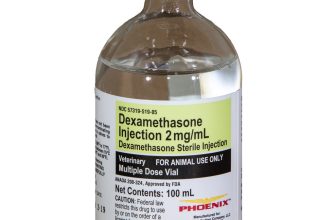Book your annual checkup now. Regular visits significantly reduce your risk of developing serious health problems. Studies show that early detection dramatically improves treatment outcomes for many conditions, leading to better long-term health and quality of life.
Canada’s healthcare system offers numerous preventative services, including vaccinations for adults and children, cancer screenings (mammograms, colonoscopies), and blood pressure monitoring. Take advantage of these free or low-cost programs! Provincial health insurance plans cover most preventative services; check with your province for specifics on coverage details. Don’t forget the importance of regular dental and vision checkups; these are generally not covered under provincial health insurance.
Beyond routine checkups, focus on lifestyle choices. Maintaining a healthy weight through balanced nutrition and regular physical activity (aim for at least 150 minutes of moderate-intensity exercise per week) is vital. Quitting smoking and limiting alcohol consumption further enhances your well-being. These simple steps, combined with proactive healthcare engagement, contribute significantly to your overall health and longevity. The average life expectancy in Canada is 82 years, a figure you can influence positively.
- Canadian Health: A Detailed Overview
- How to Access Canadian Healthcare: A Step-by-Step Guide
- Understanding Your Provincial/Territorial Health Card: Eligibility and Benefits
- Eligibility Details
- Benefits Covered
- Replacing a Lost or Stolen Card
- Additional Information
- Commonly Covered Services: What’s Included and What’s Not
- Waiting Times in the Canadian Healthcare System: Reality and Expectations
- Navigating Specialist Referrals: The Process and Potential Delays
- Understanding Wait Time Variations
- Strategies for Shorter Wait Times
- Prescription Drug Coverage in Canada: Public and Private Options
- Public Plan Limitations
- Private Insurance Options
- Finding the Right Coverage
- Emergency Medical Services in Canada: Access and Coverage
- Maintaining a Healthy Lifestyle in Canada: Resources and Support
- Mental Health Support
- Healthy Eating and Physical Activity
Canadian Health: A Detailed Overview
Canadians access healthcare through a publicly funded system, Medicare. This means the government covers most medically necessary services.
Coverage varies by province and territory, but generally includes doctor visits, hospital stays, and many diagnostic tests.
- Prescription drugs are a notable exception; provincial drug plans offer partial coverage, often requiring co-payments or supplementary insurance.
- Dental care, vision care, and physiotherapy are usually not covered under Medicare, although some provinces offer limited programs for low-income individuals.
To access healthcare, Canadians register with a family doctor. This doctor acts as a primary care provider, referring patients to specialists when necessary. Wait times for specialist appointments can vary significantly depending on location and specialty.
- Expect potential waits for specialist consultations, especially for procedures requiring surgery.
- Consider supplemental health insurance for coverage of services not included in Medicare. This can help reduce out-of-pocket costs.
- Familiarize yourself with your province’s specific health plan details for complete information on covered services and eligibility requirements.
The Canadian healthcare system consistently ranks highly in international comparisons for quality of care. However, ongoing challenges include managing wait times and addressing regional disparities in access to services.
For updated information on specific provincial and territorial health plans, consult the relevant government websites.
How to Access Canadian Healthcare: A Step-by-Step Guide
First, confirm your eligibility. Canadian citizens and permanent residents are automatically covered. Temporary residents may need to purchase private health insurance.
Next, select a family doctor. Use online search engines or ask for referrals from friends and family. Many provinces have online doctor search tools on their health ministry websites.
Then, register with your chosen doctor. You’ll need your health card and personal information. This often involves completing a registration form, either in person or online.
After registration, schedule appointments directly with your doctor’s office by phone or online. For non-emergency situations, booking in advance is highly recommended.
If you require urgent care, visit a walk-in clinic or emergency room. Walk-in clinics offer quicker service for non-life-threatening conditions, while emergency rooms are for serious injuries and illnesses.
For prescription medications, your doctor will provide you with a prescription. You can then fill it at a local pharmacy. Provincial drug plans may cover some or all of the cost depending on your situation and the medication.
Finally, remember to always carry your health card. This card is your key to accessing publicly funded healthcare services.
Understanding Your Provincial/Territorial Health Card: Eligibility and Benefits
Check your province or territory’s website for precise eligibility requirements. Generally, you need to be a resident to qualify. Proof of residency, such as a driver’s license or utility bill, is usually required. Application processes vary; some provinces offer online applications, while others may require in-person visits.
Eligibility Details
Eligibility rules differ slightly by province and territory. Factors like length of residency and immigration status influence your eligibility. For detailed information, consult the health authority in your specific region. You can usually find this information easily through a quick online search using “[your province/territory] health card eligibility“.
Benefits Covered
Your provincial or territorial health card provides access to medically necessary hospital and physician services. This includes doctor visits, hospital stays, and many diagnostic tests. Prescription drugs are generally not fully covered; however, some provinces offer drug coverage programs for specific populations (seniors, low-income individuals). Dental care, vision care, and other services are typically not covered under provincial health insurance. Expect variations in specific coverage details between provinces and territories. Consult your province’s healthcare website for the complete list of covered services.
Replacing a Lost or Stolen Card
If your card is lost or stolen, report it immediately to your provincial or territorial health authority. They will guide you through the process of obtaining a replacement. Expect some delay while your application is processed, and keep your replacement application reference number. You’ll need this to confirm replacement details.
Additional Information
Provincial health authorities offer support services and resources. Contact numbers and online resources are usually available on their websites. They can help you understand specific coverage, claim processes, and resolve any issues promptly.
Commonly Covered Services: What’s Included and What’s Not
Canada’s publicly funded healthcare system covers many services, but understanding its scope is key.
- Physician services: Doctor visits, including consultations, examinations, and diagnoses are covered. Expect to pay for services outside of standard medical care, such as cosmetic surgery.
- Hospital services: In-patient care, including room and board, most surgeries, and medically necessary tests are included. Private rooms often involve additional charges.
- Diagnostic testing: Blood tests, X-rays, and other diagnostic procedures performed in hospitals or approved clinics are generally covered.
- Prescription drugs: Coverage varies by province and territory. Some provinces offer drug plans for seniors and low-income individuals; others have more limited coverage. Many Canadians rely on private insurance or pay out-of-pocket for prescription medications.
- Mental health services: Access to mental health services varies. While some treatments are covered, others may require private insurance or self-payment. Waiting times can be significant.
Services typically not covered include:
- Dental care: Most dental services are not covered by the public system, requiring private insurance or direct payment.
- Vision care: Eye exams and glasses are usually not covered, though some provinces offer assistance programs for low-income individuals.
- Physiotherapy and other rehabilitation services: While some physiotherapy may be covered under certain circumstances, many patients pay out-of-pocket or rely on private insurance.
- Most non-emergency ambulance services: While emergency ambulance transport is covered, non-emergency transport usually requires payment.
- Cosmetic procedures: Procedures undertaken purely for cosmetic reasons are not covered.
Always confirm coverage with your provincial or territorial health insurance plan before receiving any medical services. Provincial healthcare plans have specific regulations. Understanding these nuances will avoid unexpected costs.
Waiting Times in the Canadian Healthcare System: Reality and Expectations
Plan for potential delays. While Canada boasts universal healthcare, access isn’t instant. Expect waits for specialist appointments and some procedures.
Canadian Institute for Health Information (CIHI) data reveals considerable variation across provinces. For example, wait times for hip replacements range from an average of 12 weeks in some provinces to over 26 in others. These figures fluctuate annually; consult your province’s health authority for the most up-to-date information.
Several factors influence wait times: the severity of your condition (urgent cases receive priority), the availability of specialists, and the overall demand on the system. Longer waits often occur in specialized areas like cardiology or oncology due to limited resources and high patient volume.
| Procedure | Average Wait Time (Weeks) – Example Range |
|---|---|
| Hip Replacement | 12 – 26 |
| Knee Replacement | 10 – 22 |
| MRI | 4 – 10 |
| Specialist Appointment (e.g., Cardiology) | 6 – 16 |
To minimize wait times, utilize online booking systems where available. Establish a relationship with a family doctor for quicker referrals. Explore options like private clinics for faster access (though these aren’t covered by the public system). Consider virtual consultations for certain issues. Finally, prioritize your health concerns and seek immediate medical attention when necessary.
Remember: Provincial healthcare systems continuously strive for improvement. Government initiatives aim to reduce wait times through increased funding and infrastructure development. However, the system’s capacity is finite, so proactive planning remains important. By understanding realistic expectations, you can better navigate the Canadian healthcare system.
Navigating Specialist Referrals: The Process and Potential Delays
Contact your family doctor. They’ll assess your need for a specialist and, if necessary, complete a referral form. This typically includes your medical history and reason for referral. Expect this process to take a few days.
Your referral goes to the appropriate specialist. Wait times vary significantly by specialty and location. Expect delays, potentially several weeks or even months, for high-demand specialists in major cities. Rural areas may have shorter wait times. Check with your provincial health authority’s website for approximate wait times in your area.
Understanding Wait Time Variations
High-demand specialists, such as cardiologists or oncologists, often have longer wait lists. Less specialized physicians generally have shorter waits. Provincial healthcare systems manage wait times differently; some provinces offer online wait time tracking tools. Using these can give you more visibility into the process.
Strategies for Shorter Wait Times
Ask your family doctor about less busy specialists in your region or nearby if acceptable. Explore different clinics or hospitals; some may have shorter wait times. If your condition is urgent, explain this to your doctor. They can expedite the referral process. Keep accurate records of the referral and your communication with your healthcare providers.
Prescription Drug Coverage in Canada: Public and Private Options
Canadians access prescription drug coverage through a combination of public and private plans. Public plans, primarily provincial and territorial, vary significantly. For example, some provinces offer comprehensive coverage for seniors, while others focus on specific high-cost medications or limited populations. Eligibility requirements and the extent of coverage differ. Many provinces provide drug plans for low-income individuals, while others offer plans for specific conditions like cancer or HIV/AIDS. Check your province’s health ministry website for details.
Public Plan Limitations
Provincial drug plans often don’t cover all medications, leaving patients with significant out-of-pocket costs. Many medications are excluded, and even covered medications may have significant co-payments or deductibles. This creates a gap in coverage many Canadians address with private insurance.
Private Insurance Options
Private insurance, often through employers or purchased individually, fills these gaps. These plans offer broader coverage than public plans, often including more drugs and reducing cost-sharing. Group plans through employers are common, offering varying levels of coverage depending on the employer’s contribution. Individual private plans provide another option, although costs can be substantial, depending on age and health status. Consider the coverage provided, the premium costs, and any out-of-pocket expenses when comparing plans.
Finding the Right Coverage
To determine the best approach, review your provincial drug plan, assess your health needs, and compare private insurance options. Consider factors such as prescription frequency, the cost of needed medications, and your income level. Online comparison tools and independent advisors can help you navigate available plans and select one that meets your individual requirements. Remember to verify your coverage regularly as plans and formularies change.
Emergency Medical Services in Canada: Access and Coverage
Canadians generally enjoy good access to emergency medical services (EMS), but regional disparities exist. Response times vary significantly depending on location, population density, and available resources. Rural and remote areas often face longer wait times compared to urban centers.
Paramedics provide pre-hospital care, ranging from basic life support to advanced cardiac life support, depending on their certification level and the specific service. Each province and territory manages its own EMS system, leading to variations in service delivery and funding models. For example, Ontario’s system differs from British Columbia’s in its organization and resource allocation.
Funding for EMS comes primarily from provincial and territorial governments, with some contributions from municipalities. This funding model impacts the availability of resources, including the number of ambulances, paramedics, and specialized equipment. Increased funding could improve response times, particularly in underserved areas.
The Canadian Institute for Health Information (CIHI) provides data on EMS performance, such as response times and patient outcomes. This data is vital for identifying areas needing improvement and guiding resource allocation decisions. Regularly reviewing this data can inform policy changes and service improvements.
To improve EMS access and coverage, Canada should consider investing in advanced communication technologies, such as telehealth, to provide remote pre-hospital care. Training more paramedics and strategically placing ambulances in underserved areas are other potential solutions. Improving data collection and analysis provides policymakers with better insight to allocate funding effectively.
Maintaining a Healthy Lifestyle in Canada: Resources and Support
Find a doctor or nurse practitioner. Canada’s healthcare system offers primary care through family doctors or nurse practitioners. Register with a health clinic near you for regular check-ups and preventative care. Many provinces have online registration tools to simplify the process.
Utilize provincial health services. Each province and territory offers various programs and resources focused on health and wellness. This includes free or subsidized programs for immunizations, disease screenings (like cancer screenings), and mental health support. Explore your province’s health website for details. For example, many provinces offer free or low-cost gym memberships for seniors.
Mental Health Support
Access mental health resources. Mental health is crucial. Look into government-funded services such as counselling and therapy through your province’s health services. Organizations like the Canadian Mental Health Association (CMHA) provide support, resources, and referrals. They offer various programs, helplines, and online resources tailored to different needs.
Healthy Eating and Physical Activity
Eat a balanced diet. Canada’s Food Guide provides recommendations for healthy eating habits. Focus on incorporating plenty of fruits, vegetables, whole grains, and lean protein into your meals. Use Canada’s nutrition labels to make informed food choices.
Stay active. Aim for at least 150 minutes of moderate-intensity aerobic activity per week, as recommended by Canada’s Physical Activity Guidelines. Take advantage of local parks, trails, and recreational facilities. Many communities offer free or low-cost fitness programs.
Consider registered dietitians and personal trainers. For personalized guidance, consult a registered dietitian to create a tailored nutrition plan or a certified personal trainer to design a suitable fitness regimen. Many health insurance plans offer partial coverage for these services.










